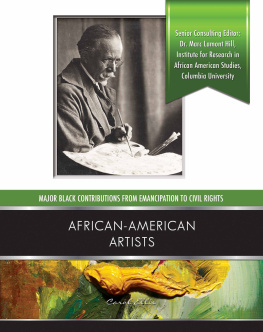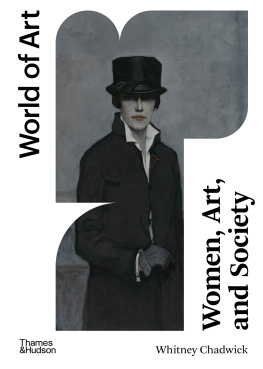Contents
Guide
Pagebreaks of the Print Version
PRAISE FOR Beautiful, Gruesome, and True
Kaelen Wilson-Goldie writes with clarity and great knowledge about the artists Amar Kanwar, Teresa Margolles, and the Syrian collective Abounaddara. A gifted critic and a compelling journalist, she offers many important insights into their art and the challenges they each face in their confrontation with authority, repressive regimes, death, and violence. The story she tells is one of persistence and dedication, contingency and tragedy, and the ability of art to transcend the horrors of murder, violence, war, and repression. It could not be more timely.
GLENN D. LOWRY, David Rockefeller director, Museum of Modern Art
Without cynicism or navet, Kaelen Wilson-Goldie finds and engages deeply with artists who maintain unflinching contact with the violence of the present. No one can know whether real social change will ever arrive, but without doubt the art of Kanwar, Margolles, and Abounaddara, as beautifully unfolded in this book, will stand as a passionate, imaginative, and scrupulous history of those who refused to turn away.
KATY SIEGEL, Eugene V. and Clare E. Thaw Endowed Chair in Modern American Art, Stony Brook University, and senior curator, Baltimore Museum of Art
Kaelen Wilson-Goldie writes with depth, nuance, and empathy about three artists who have dedicated their lives to grappling with violence, conflict, and war. She shows that its both possible and essential to produce politically engaged art that truly matters, without fear or compromise. This book is an important contribution to contemporary debates over journalism, misinformation, and the nature of truth.
MOHAMAD BAZZI, director, Hagop Kevorkian Center for Near Eastern Studies, New York University
Beautiful, Gruesome, and True
Artists at Work in the Face of War
Kaelen Wilson-Goldie
COLUMBIA GLOBAL REPORTS NEW YORK

Published with support from the Andrew W. Mellon Foundation
Beautiful, Gruesome, and True
Artists at Work in the Face of War
Copyright 2022 by Kaelen Wilson-Goldie
All rights reserved
Published by Columbia Global Reports
91 Claremont Avenue, Suite 515
New York, NY 10027
globalreports.columbia.edu
facebook.com/columbiaglobalreports
@columbiaGR
Library of Congress Cataloging-in-Publication Data
Names: Wilson-Goldie, Kaelen, author.
Title: Beautiful, gruesome, and true : artists at work in the face of war / Kaelen Wilson-Goldie.
Description: New York, NY : Columbia Global Reports, [2022] | Includes bibliographical references.
Identifiers: LCCN 2022014395 (print) | LCCN 2022014396 (ebook) | ISBN 9781735913728 (paperback) | ISBN 9781735913735 (ebook)
Subjects: LCSH: War in art. | Art and social conflict. | Kanwar, Amar, 1964---Criticism and interpretation. | Margolles, Teresa, 1963---Criticism and interpretation. | Abounaddara (Artist collective)
Classification: LCC NX650.W3 W55 2022 (print) | LCC NX650.W3 (ebook) | DDC 704.9/4935502--dc23/eng/20220512
LC record available at https://lccn.loc.gov/2022014395
LC ebook record available at https://lccn.loc.gov/2022014396
ISBN: 978-1-7359137-3-5 (ebook)
ISBN: 978-1-7359137-2-8 (paperback)
Book design by Strick&Williams
Map design by Jeffrey L. Ward
Author photograph by Ibrahim Saidi
Printed in the United States of America
For Amal Kenawy (19742012)and Leila Alaoui (19822016)
History is usually the sum of instances and expressions of violence. Theres also the history of ideas, the history of art, there are other histories. Since a very young age Ive been preoccupied by conflict and social injustice. My position is very simple. There are many different ways of understanding the world that are connected. On the front lines, there are journalists. With a little more time, there are historians. Theres also writers, musicians, artists who have other tools, other methods. We are complementary with anthropologists and sociologists and the people who talk at the counter when they are drinking coffee in the morning and cognac in the evening. We are all in our place trying to figure out what the fuck is going on.
RIC BAUDELAIRE
CONTENTS
Preface
This book tells the stories of three artists who for various and intriguing reasons have been working in the face of war for a decade or more. In response to periods of extreme political violence, these artists have created bodies of work in film, photography, and multimedia installation. Their works have been shown in museums, exhibitions, and festivals all over the world, earning prestigious awards and critical acclaim while at the same time challenging ideas about what contemporary art can be and raising questions about how artists engage with their subjects, institutions, and audiences. All of this has implications at a time when images of war, atrocity, and disaster are everywhere and easily accessible. Why are some of the most interesting artists of our time drawn to such difficult subjects, and how do they manage to cut through the abundance of tragic material and our desensitization to violence?
In rural southeast India, Amar Kanwar has been listening to stories, recording old songs, collecting seed samples, and working with local media activists to try and make sense of the violence that has ripped through tribal lands in the drive to extract precious metals from mountains deemed sacred to their inhabitants for thousands of years. In the Mexican border town of Ciudad Jurez, Teresa Margolles has met the mothers of missing women, befriended a clique of endangered transgender sex workers, gathered the shattered glass of drive-by shootings, and soaked up the blood of cartel executions, translating these encounters into objects arranged in somber exhibitions. In Syria, the anonymous members of the filmmaking collective known as Abounaddara have generated more than four hundred extremely short, rigorously precise films, released one at a time, every Friday, for a period of seven years. The films remain openly available online as documents of a once-promising revolution that morphed into civil war.
Kanwar, Margolles, and the few known founders of Abounaddara were all born in the 1960s, and belong to more or less the same generation. But they do not represent a group or a school or a movement within the field of contemporary art. All of them are looking at situations of war, conflict, and violence and making works that are contemplative, orderly, and contained. But it cannot be said that they share an aesthetic. One would never mistake a film by Kanwar for a video by Margolles or Abounaddara. They have each developed a sensibility in their work that is distinct and dramatically different from one another. And on a personal level, they are not friends or colleagues, not even in the broadest sense. They have shown in some of the same exhibitions and won a number of the same prizes. But they are not close. They occupy places in the art world that are difficult to pin down. None of them are particularly comfortable being associated with the art world in the first place.
What binds these artists together are the ways in which they work and the conditions upon which they insist. All of them are driven by a sense of greater purpose. Stubborn and single-minded, they have stuck themselves in specific places and committed their time to people who do not necessarily want or need their charity. There, in those contexts where death and dispossession and the loss of dignity are most apparent, they have found the tools, methods, and languages to make work that is then disseminated around the world under the rubric of contemporary art. Because these artists came into the art world from other disciplines, the question of whywhy in the face of unconscionable violence making a work of art would seem like an adequate responseis one that runs throughout this book. Another question is to what effect. An artwork might have something different or more enduring to say about a given conflict when compared to journalism, activism, or human rights advocacy. But none of them have any real chance of bringing about the kind of resolutionsuch as an end to the war in Syria, the retirement of drug cartels in Mexico, or the restoration of tribal lands in Indiathat has eluded generations of diplomats, political leaders, and experts.







![Robertson Bruce - Lives of the artists: [masterpieces, messes (and what the neighbors thought)]](/uploads/posts/book/163588/thumbs/robertson-bruce-lives-of-the-artists.jpg)


